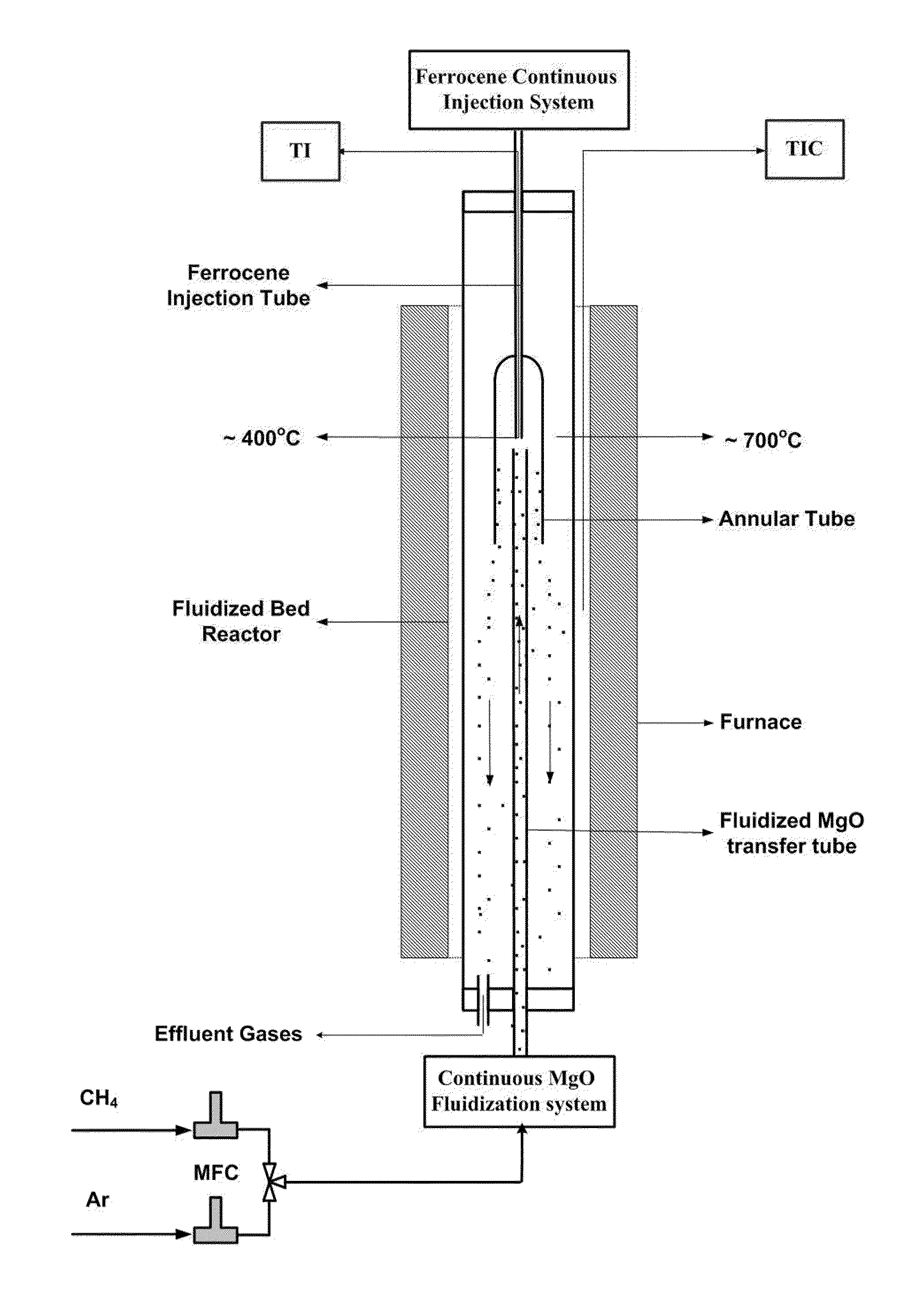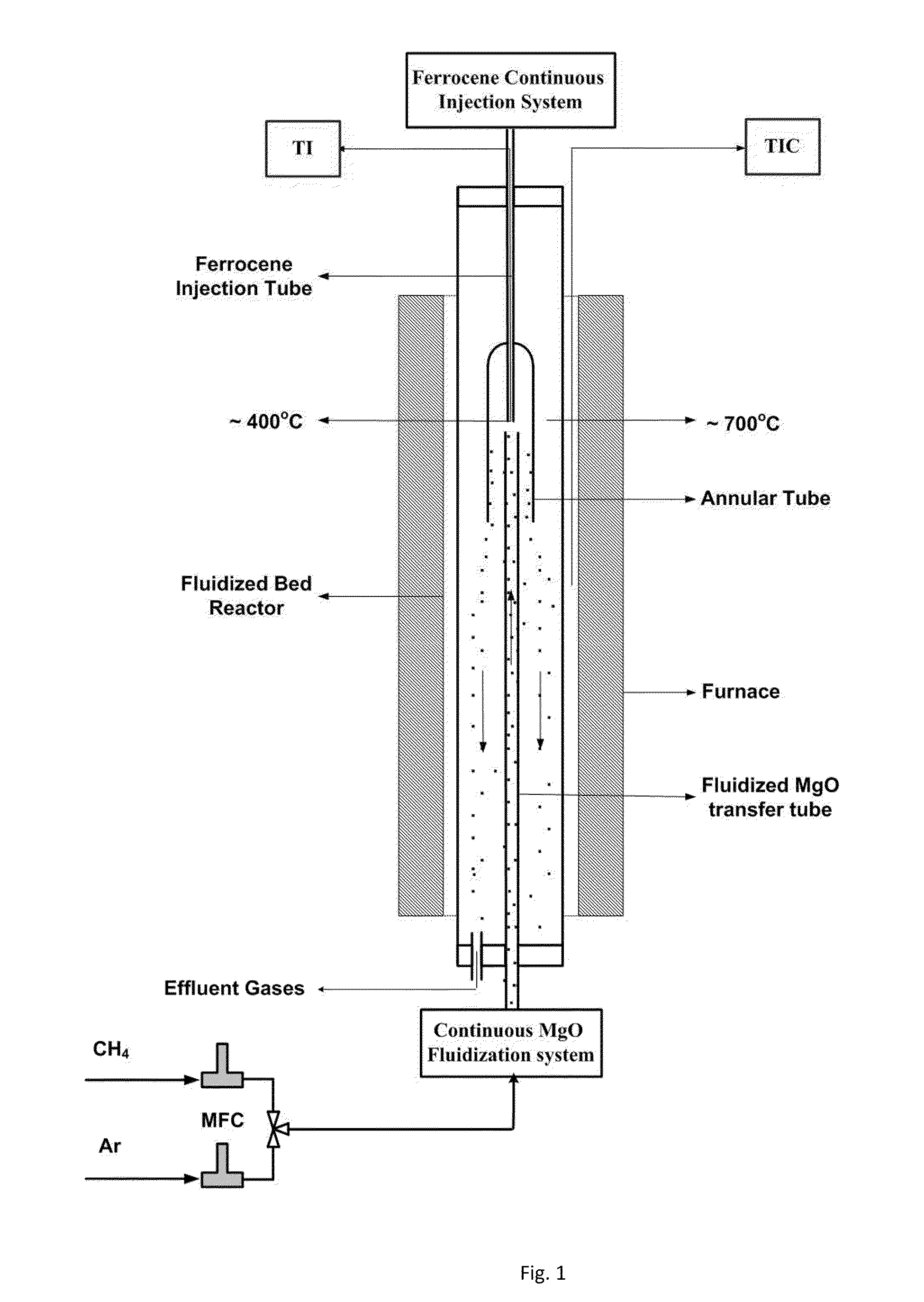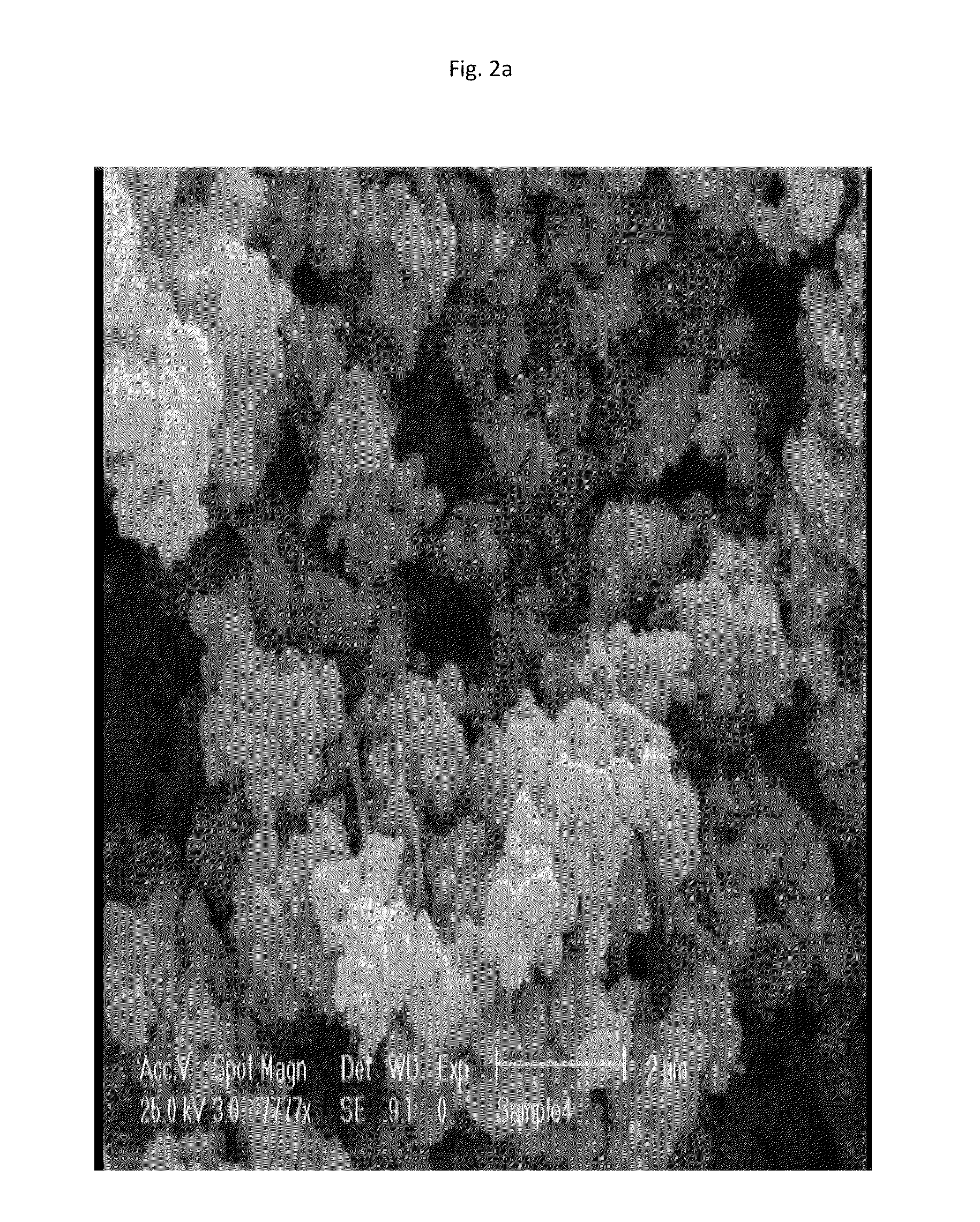Novel carbon nanotubes synthesis continuous process using iron floating catalysts and MgO particles for CVD of methane in a fluidized bed reactor
a technology of carbon nanotubes and catalysts, applied in the field of new carbon nanotubes, can solve the problems of wasting catalysts, affecting the synthesis of carbon nanotubes, and severely limited cnts production efficiency in fixed-bed reactors, and achieve the effect of large surface area and catalyst was
- Summary
- Abstract
- Description
- Claims
- Application Information
AI Technical Summary
Benefits of technology
Problems solved by technology
Method used
Image
Examples
Embodiment Construction
Experimental Procedure
[0027]FIG. 1 shows the system used for synthesis of CNTs. The system has three main parts including ferrocene continuous injection and fluidized MgO introduction systems and the fluidized bed reactor.
[0028]The ferrocene injection system includes a tube packed with 60-100 mesh ferrocene particles, through which 60-120 sccm argon was flowing. The tube was placed in a constant and uniform temperature bath at 150° C. The ferrocene injection system is placed on top of the fluidized bed reactor and ferrocene is injected in the hot (˜700° C.) zone of the reactor, through an extended tube. An air cooling system was used to prevent overheating of the ferrocene in the tube to temperatures higher than 400° C. At temperatures higher than 460° C. ferrocene decomposition becomes significant. To enhance the contact of ferrocene and MgO in the reactor, a larger diameter (annular) tube covering both the ferrocene injection tube and the fluidized MgO introduction tube, was used....
PUM
| Property | Measurement | Unit |
|---|---|---|
| size | aaaaa | aaaaa |
| diameters | aaaaa | aaaaa |
| temperature | aaaaa | aaaaa |
Abstract
Description
Claims
Application Information
 Login to View More
Login to View More - R&D
- Intellectual Property
- Life Sciences
- Materials
- Tech Scout
- Unparalleled Data Quality
- Higher Quality Content
- 60% Fewer Hallucinations
Browse by: Latest US Patents, China's latest patents, Technical Efficacy Thesaurus, Application Domain, Technology Topic, Popular Technical Reports.
© 2025 PatSnap. All rights reserved.Legal|Privacy policy|Modern Slavery Act Transparency Statement|Sitemap|About US| Contact US: help@patsnap.com



